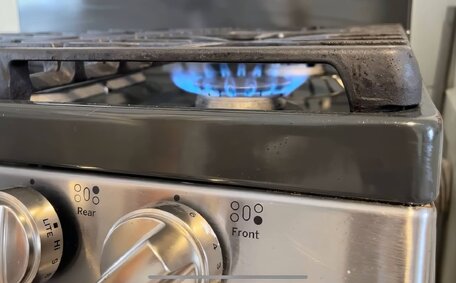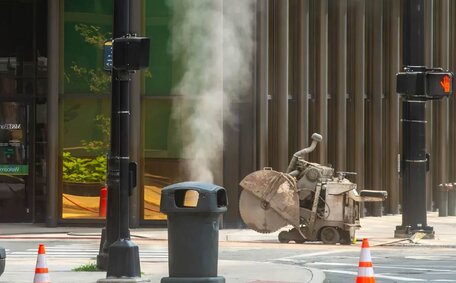Overview of the Pipe Relining Process
Trenchless pipe relining is a minimally invasive alternative to traditional pipe replacement. It involves coating the inside of existing pipes with a durable epoxy resin liner, which can do wonders for the life expectancy of your plumbing system by essentially creating a new pipe within the original structure. Key benefits of pipe relining, such as creating a new pipe within old ones, for the pipes in your home include:
- Much less disruption - No need to dig trenches or break up flooring/walls
- Faster turnaround times - The relining process, which creates a new pipe within the old one, often takes just a few hours
- Long lifespan - Epoxy liners can last over 50 years
- Cost-effective - Relining the best pipe can save more than the more expensive pipe replacement in most scenarios
The pipe relining process consists of several key steps:
- Inspection - A camera is used to assess damage and measure the pipes
- Cleaning - The pipes are thoroughly cleaned to prepare for the epoxy resin
- Lining - A felt liner soaked with epoxy is blown or pulled into the pipe, with the liner inserted into and expanding to form a firm pipe within old infrastructure
- Curing - The liner hardens into place with a watertight, jointless new pipe
- Reinstatement - Service connections are reinstated and testing is conducted
The curing process can take just a few hours, with pipe access often restored the same day. Pipe relining can ensure incredibly fast turnarounds with less labour and without the need excavation of infrastructure or close off areas.
Required Materials and How They Impact the Timeline
The key materials used in the pipe relining process, which influence the timeline pipe relining projects, are installable without the need for excavation, are epoxy resins, inversion liners, and pull-in-place materials. These materials, which are adeptly crafted by us, frame the timeline of a pipe relining project, often refurbishing your pipes with minor damage without need for excavation in pivotal ways:
Epoxy Resin
Epoxy resin, a core component that pipe relining offers, lines and seals the pipe damage ensuring the pipes can withstand future wear and tear. It hardens into a tight, seamless layer that creates a new pipe inside the old one, rejuvenating a damaged drain for decades. The curing time for epoxy resin shapes the overall single-day timeline for the different types of pipes involved in relining projects, typically spanning 6-12 hours.
Inversion Liners
These flexible, resin-saturated liners are blown or inverted into pipes with minor damage through access points, and this method lets you know how quickly relining can restore your plumbing, and can be performed without need for excavation. They expand and mould to the pipe walls. Longer pipes require more liner material and a more extended installation time from our technicians, reaffirming relining as an efficient option when traditional methods are not the only option.
Pull-in-Place Materials
With strong pull, the liners are drawn into damaged pipe sections using ropes. Again, broader coverage means longer material preparation and installation time for our technicians. But as does pipe relining using inversion liners, total project time remains within the span of hours and concludes in a single day.
The ability for our epoxy resins to last 50+ years also means pipes with minor damage reinforced by pipe relining see increased longevity versus traditional pipe replacement. And with project timelines measured in hours rather than relining pipe replacement’s days, Rockdale Plumbing’s best pipe relining services ensure your home’s plumbing functionality returns to normal with minimal disruption or extended downtime
Inspecting the Damaged Pipe
Thoroughly inspecting damaged pipes is a critical first step in any winter plumbing project, often achieved without need for excavation. At Rockdale Plumbing, when it’s time for a comprehensive evaluation of your drain systems, we utilise CCTV cameras to detail the relining pipe layout, pinpointing all problem areas. Key aspects we assess during inspection include:
- The location, size, and extent of cracks, holes, breaks or blockages leading to blocked drains
- Presence of tree roots intrusions, one of the most common causes of pipe obstruction, or a buildup of debris/sediment
- Integrity of pipe joints and connections
Armed with this detailed damage analysis, Our technicians can then optimally plan your plumbing relining process – addressing your specific needs by targeting the problem sections you don’t want and customising the liner materials and curing times accordingly. We also ensure clients gain the essential insights about your pipes, helping them understand the footage and recommendations from the inspection.
The precision of modern pipe inspection technology allows this step, even in the case of a burst pipe, to be completed rapidly. Thorough inspections mean reduced necessity for the disposal of old pipes, promising smoother installations down the line as well. So, when it comes to the initial diagnosis, investing time here pays dividends regarding your pipe relining outcome.
By leveraging CCTV drainage cameras and the expertise of our seasoned technicians, Rockdale Plumbing’s pipe inspections provide crucial insights, especially when considering your bathroom’s plumbing, for timely, high-quality relining projects.
Preparing and Inserting the Epoxy Lining
Before the epoxy resin can be inserted, the damaged pipes must be thoroughly prepared. Our technicians, skilled at addressing a clogged drain, first use high-pressure water jets to clean out any debris, grease or mineral deposits, which was very effective in preparing the existing pipes for the relining. This ensures the liner achieves optimum adherence to the interior walls of the pipes in your plumbing system.
The techniques used repair on any sections of collapsed piping or significant cracks and gaps ensure the liner can achieve a tight seal. Access points are then unveiled at strategic locations to administer the liner through the pipes your system depends on.
Prior to being inserted into the pipe, the felt inversion lining tube, requiring no excavation, is vacuum impregnated with epoxy resin. It steadily inflates to mould to the interior walls. For more minor pipes, we only can utilise pull-in-place materials, which can also be pre-soaked in resin, to ensure that the fixed pipe damaged section is secure with a new pipe.
The quality of our work is mirrored when our technicians meticulously feed the liner into the pipe being rehabilitated, ensuring you receive precisely what you need from the relining procedure.
As the liner touches the old pipe walls, excess resin is squeezed out. So the size and layout of your pipes determines the prep time needed as well as how long installation takes. But, as it does not need extensive excavation or demolition, the drain pipe relining process remains significantly faster than replacement.
Once fully expanded, the epoxy cures in the crucial span within the pipe which relining surfaces for 6-12 hours, constructing a polished, seamless new line within your sewer lines. Our team did a great job as they established service connections and performed tests, ensuring that your new sewer line is watertight without the need for further assessment before restoring full function.
Curing the New Pipe Lining
Once the epoxy liner is firmly in place inside the damaged pipe, it must cure to harden and form a tight seal. There are two main curing methods:
Ambient Curing
This method involves allowing the liner to cure naturally at the ambient temperature, which can span over 6-12 hours. It is the more common method and works well for standard epoxy formulations.
Heat Curing
If you’re curious about how long does pipe relining take, The method can involve applying heat to accelerate the curing, slashing the wait to just 1-2 hours. This requires blasting hot water or steam from the hot water system into the pipe lining to accelerate the process. It is useful for faster turnarounds but runs a higher risk of resinshrinkage issues.
At Rockdale Plumbing, a reputable plumbing company, call us to discuss the most relevant curing method as we work diligently to evaluate your specific circumstances. While ambient curing sets in 6-12 hours, the total project timeline remains less than a day in most cases.
We make sure to work diligently during the curing timeframe to reconnect service lines, highly recommend aiming to keep your old pipes in full operation as swiftly as possible once the liner is set.
The curing stage is critical because it creates new pipe strength by reinforcing the weakened pipe for decades. So we monitor this closely, especially when dealing with damaged sewer pipes, applying heat or testing liners as needed, to guarantee your relined pipes offer superior leak prevention and flow rates going forward.
Typical Duration of a Pipe Relining Project
The timeline for a plumbing service like pipe relining can vary depending on several factors, but most are completed in less than a day. The key steps and average durations are:
- Inspection (1-2 hours)
- Cleaning & Repairs (2-3 hours)
- Lining Installation (2-4 hours)
- Curing (6-12 hours)
- Reinstatement & Testing (1-2 hours)
Hence, when compared with traditional methods, the curing time for the epoxy resin ensures pipe relining is generally a same day service. Some projects may extend across two days depending on the pipe size and accessibility.
When appraising usual schedules, pipe relining, sidestepping the ordeal of removing replacing pipes, concludes more promptly than traditional methods. The process of removing and replacing pipes by digging trenches often takes upward of a week.
At Rockdale Plumbing, we ensure our commercial plumbing services, notably prompt, keep disruption to your property and business to an absolute minimum. Rest assured, as we are highly recommended and work diligently through each phase to restore your sewer pipe swiftly, even when unique circumstances might extend the timeline.
We also offer pipe repair and drains services, along with plumbing maintenance for your home business, and follow-up inspections that the relining could require across its extensive lifespan. So you would highly recommend our solutions, ensuring you enjoy peace of mind with your pipes renewed for decades, all in the timeline of a single day.
Factors That Can Delay the Project
While pipe relining is designed to be a swift, minimally disruptive process, there are some factors that can extend project timelines:
Pipe Complexity
Intricate pipe layouts with multiple bends, angles and connections can complicate a plumbing problem and prolong inspection; however, no problem is too complex for our seasoned technicians. Difficult access can lead to hampered progress.
Unforeseen Damage
If pipeline damage come out to be worse than initially assessed during cleaning, more repairs may be needed before relining can occur.
Curing Issues
Improper heat or steam application during accelerated curing can cause resin shrinkage, among other things can necessitate a re-lining.
Access Problems
Blocked or limited access to pipe sections can make inserting and inflating liners more challenging.
Even with potential delays, when your home’s plumbing system is in our care, there’s no denying that pipe relining often concludes in less than a day. Our experienced technicians in the relining business can help resolve any complexities while minimising invasive demolition to your home’s plumbing infrastructure.
We also stay onsite to continually monitor timeline-impacting elements like epoxy curing, ensuring our pipe relining solutions set properly. This proactive approach, driven by our expertise, does a great job of swiftly addressing emergent issues to get your pipes relined and operational ASAP.






